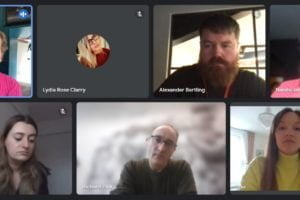Hive Heroes:
Crew introduced a CDP around five years ago. The main reason for getting a CDP was the lack of self-service within the business. Any question, no matter how small, took the same amount of time because the data didn’t live in the business; it had to go to a third party. The CDP was brought in to speed up processes and centralise relevant data into a single point of truth.
Steven Moriarty
Head of Customer Data and Insight

Frances at The Retail Hive sat down with Steven to learn all about his CDP journey. Here’s what Steven had to say…
The CDP will only be as good as the expertise using it or the trained expertise, so there’s going to be a cost, whatever happens. Because just having a CDP is like having a Rolls-Royce without a driving licence.”
What, in your experience, holds you back from activating data? What are the sort of big barriers that you’re facing?
Siloed data is a massive challenge, especially when dealing with multiple platforms, particularly third-party platforms. As we transition from a third-party to a first-party world, each platform is distinct and not natively interoperable with others. There’s no seamless integration; each platform retains its unique features and data structures. Joining this diverse data becomes a complex task due to different joins, keys, and the absence of a single source of truth or a universal ID across the system. The core issue lies in figuring out how to amalgamate this data and make meaningful sense of it.
There’s an excess of data, resembling rivers, lakes, and even seas. Another significant consideration is determining how much of this data is actually needed. Data retention becomes crucial because while having vast amounts of data is appealing, if it’s not actively utilised, it incurs storage costs and hampers system efficiency by cluttering it. Performing regular audits or spring cleaning becomes essential, questioning the relevance and purpose of retained data. Simply accumulating data without a clear purpose is inadequate.
How many platforms are you working across with your data, and how are you combining it?
We have a CDP. Crew introduced it about three and a half years ago before I joined, and I’ve been with the company for almost two years now. The main reason for getting the CDP was the lack of self-service within the business. Any question, no matter how small, took the same amount of time because the data didn’t live in the business; it had to go to a third party. The CDP was brought in to speed up processes and centralise relevant data into a single point of truth.
While much heavy lifting was done before my arrival, there are still challenges with joining data, especially from various platforms like the metaverse and Google, where integrations don’t seamlessly work together. This is an ongoing issue, and it’s expected to persist as new channels and platforms emerge. Siloed data remains a challenge, but efforts have been made to join the most important and relevant data where possible.
You mentioned the lack of integration for platforms like Google or TikTok with your CDP. What do you expect from your CDP provider in terms of their ability to integrate with new technology or emerging platforms?
APIs, for example, allow for easy connections to various platforms. The expectation is that CDP providers will continue to enhance integrations with new technologies and platforms. The trend is shifting towards more open data points, and everyone wants to be the one that captures the last click or drive to the site. Third-party integrations are becoming just as relevant for them as for us to execute. CDP providers are evolving, and they are working on executing new integrations. The concept of a CDP varies across different departments within a business, and everyone has different expectations based on their specific needs. There’s no one-size-fits-all solution, and businesses might need to compromise on certain features to address their fundamental needs. It’s an interesting landscape with diverse viewpoints on what a CDP should deliver for a business.
How do you quantify CDP time and resource gains? How are you looking at how successful it is within the business, and what metrics are you using?
It’s hard to quantify. What metrics do you actually use? In terms of time and efficiency, absolutely, it is worth it. But it can be hard to quantify when staff are in role already.
There’s a couple of ways we looked at it. If we took out marketing for a second and look at execution, personalisation and how data is fed into other platforms, we can answer business-critical questions much more quickly than we could without a CDP. We can prioritise, and we can also better understand the nuances of the business.
Then also it has an impact day-to-day and ingesting data into our ESP. We have automated feeds that weren’t automated before from LinkedIn to the metaverse to ad words, which we’re using for ESP, which before were separate. We’ve got propensity to purchase models in there and we’re creating all these audiences and putting all this data in these fields for relevant third parties now. We’ve gone from a point of no personalisation to personalising, and it’s happened much quicker than we thought and that has come from the CDP as well.
There are so many savings holistically, and if you sat everyone in a room and said “what’s useful?” there’d be different views for efficiency or an execution slant. We’re doing some amazing things in performance mapping in Google and Facebook. It’s almost like you have to get everyone together just to realise how much it’s feeding the business.

There’s no one-size-fits-all solution, and businesses might need to compromise on certain features to address their fundamental needs.”
Can you share some features that you consider plug-and-play when it comes to your CDP? In comparison, what’s laborious and time-consuming for your team?
As fast as we’re moving into machine learning, especially into this GenAI world, it’s all about connecting to data; there are things where before you might have needed a group of data scientists to do it for you, but now the CDP can deliver. It adds in the customer lifetime value to a record the minute they hit the database, based on where they’ve come from, what we’ve seen and their behaviour.
These are things that before were not only laborious, but you needed a certain amount of skill within the business to be able to do it. The one thing you do need below all of that is a unified data set. These things are becoming the norm, and if we have this conversation two years from now, we’re probably saying these are expected plug-and-play features. Any CDP you use, you expect to just put your data in there, and it’s almost going to segment it for you. You’re going to ask a question rather than having to know SQL or understand how your data flows. You’re going to ask a question, prompt the chat or use a dashboard, and it’s just going to come back and do it all for you. It’s not there yet, but it’s not a million miles away either.
There’s a lot of conversation around budget and how it’s changing. It’d be good to hear your thoughts on how your data budget has changed—whether you’ve reallocated funds from other areas less important now, or if you’re putting more budget into data.
Well, there are two fascinating things for me from an allied perspective. Again, it goes back to what you want a CDP to do. The CDP will only be as good as the expertise using it or the trained expertise, so there’s going to be a cost whatever happens, because just having a CDP is like having a Rolls-Royce without a driving license. You have to train someone as well, so there is a level of skilling up or bringing that skill set into the business. What a CDP can do, if you’ve got the right people using it, is actually look at your budget—not just the data budget, but your whole budget.
The issue you’ve got is, if data can be democratised, especially telling stories, people quickly become involved. However, if you haven’t got a CDP and those stories aren’t there yet, the higher up you go, the question will always be “why do we need this? We haven’t got it now.” It’s hard to tell the stories unless you’ve got the data. It’s almost the perfect Catch-22 situation. But what will happen very quickly is once you start telling the stories, the budget starts shifting. People want to put more into data; they want to know more. The more you give them, the more they want to know.
What’s your number one barrier to data quality? I’d be interested to know, especially as you’re talking about new platforms and innovations. What are your next steps going to be, and how will they help you overcome whatever’s causing your biggest barrier right now?
Data quality is going to be the only thing that stops any business, because much like I said earlier, it doesn’t matter what tools you’re using—whether it’s deep learning analytics, large language models, or whatever you use—the data has to be in some recognisable form. The more new channels that come out and the more Gen Zs start learning new things, the way that data comes back to you is going to be different every single time.



